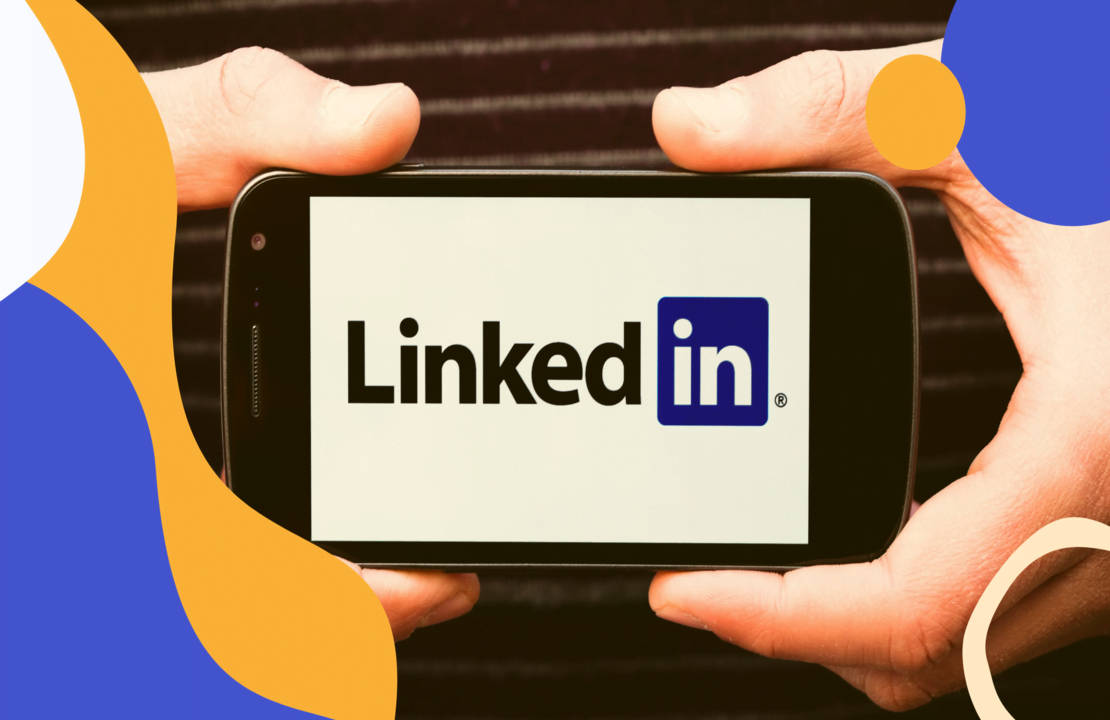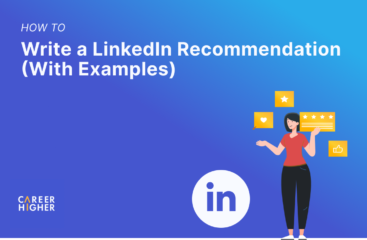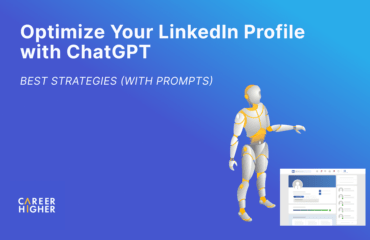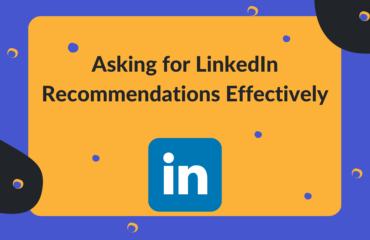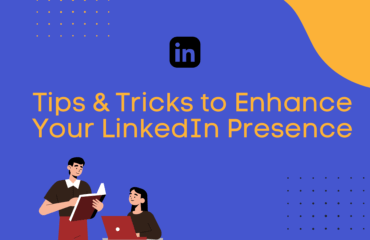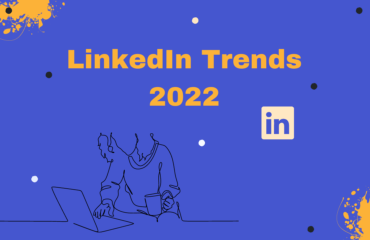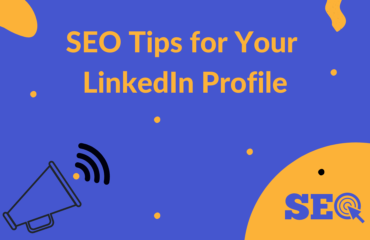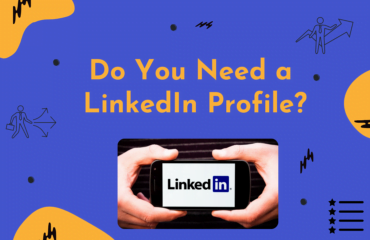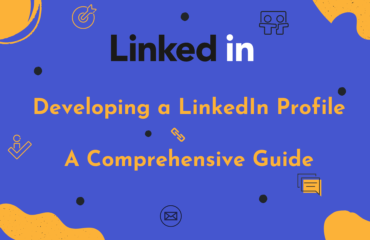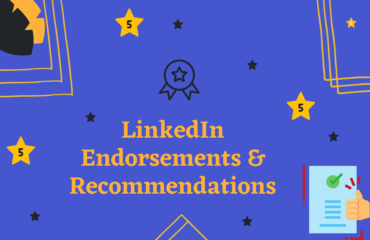Table of Contents
LinkedIn is the largest professional network hosting over 650 million users worldwide. According to research, 3 people are hired every minute on LinkedIn. Employers and candidates all over the world use LinkedIn to post jobs and make applications respectively.
The platform allows you to demonstrate your skills, expertise, and experience, and showcase your personal brand. However, in order to achieve this, it is essential to have a profile that helps you shine and stand out from the crowd. Let’s have a closer look into how to do this.
Who needs a LinkedIn profile and why
All professionals should have a LinkedIn profile, irrespective of their industry, job function, seniority level, and location. Not only will this help you search and apply for jobs, but it will also enable you to stay up to date with the latest trends in the industry and the market. Further, LinkedIn is the most efficient and effective platform to network and create valuable professional relationships, which can be integral to your career development. LinkedIn can be used in various ways based on a professional’s needs.
1) Active job seekers
Active job seekers are professionals who are actively looking for a new opportunity. Professionals who fall under this category can benefit from using LinkedIn in a variety of ways. Firstly, LinkedIn is one of the biggest, industry-agnostic, and global job search tools. Apart from applying to jobs proactively, users can also attract interest passively, by maintaining a full, high-quality, and relevant profile. Lastly, LinkedIn can be a great networking platform that can help you create valuable connections with key professionals working with your target employers.
2) Passive Job Seekers
Passive job seekers are open to considering opportunities but are not actively looking for work. If you belong to this category, you can still benefit from having a best-practice, up-to-date profile. Recruiters are looking for candidates proactively and a profile with all relevant content based on your goals can increase your discoverability.
3) Professionals not currently looking for work
LinkedIn is not only a platform to look for jobs. Even when you are not looking for a job actively, you can use the platform to your advantage. In this case, focus on establishing yourself as a thought leader and developing your personal brand. You can achieve this by being active and posting content. Also, you can engage with different professionals by liking, commenting, and sharing your thoughts with others. This can enable you to build long-term professional relationships that can be invaluable when you need to make a career move.
How to create a best-practice LinkedIn profile
In this section, we will analyze how you can create a strong LinkedIn profile by discussing various aspects that impact its discoverability and quality. Let’s have a look at them in detail:
1) Cover Image
The cover image is a good opportunity to exhibit your personal brand. Many users overlook this space and leave it empty, but we suggest using a cover image to set the tone for the rest of your profile. To do this, go with an image that conveys who you are or what you do. Some of the popular cover image ideas include a shot of your workspace, images related to your industry or illustrations of your product and services.
2) Profile Picture
Experts recommend using a recent, clear, and high-resolution, profile picture. Avoid group pictures, selfies, and other non-professional photos. When it comes to attire, dress as you would in your office to give the viewers a glimpse of your work culture. Last but not the least, smile in your picture. It motivates people to connect with you and can help in creating mutually beneficial relationships.
3) Headline
Your headline allows you to write up to 220 characters to describe yourself. Make the most of it bydescribing the key benefit you can deliver to employers based on your target jobs and candidate profile. Don’t forget to use related keywords.
For example, if you are a consultant working in the Organizational Development domain, you can either simply write ‘Consultant at XYZ’ in your headline or you can go with ‘Helping organizations develop more cooperative and healthy workplaces’.The former won’t impress, while the latter highlights your expertise in a more relevant manner.
4) About
The ‘About’ section right under your headline is your professional profile. It is a 2000-word space that you should utilize to showcase and analyze the main benefits you can deliver to employers in relation to your target jobs. You can include your key strengths, achievements, experience, education, and objectives, demonstrating your candidate value proposition.
Also, we suggest adding the following two sections:
I) Key Skills– Use the job description of your target jobs to list down all your important hard and soft skills. To get a list of keywords, you should run your resume through JobScan which will compare your resume against your target jobs. It will then generate a list of hard and soft skills that should be a part of your resume. These are the most relevant skills that should also be a part of your LinkedIn profile.
II) Industries– List all the industries you have experience working in.
Further, your summary is a great place for you to express yourself and let your story out. Remember to use your voice to communicate your personal brand. Lastly, end the section with a call-to-action to initiate connections.
5) Professional Experience
In this section, you should list all your relevant experiences. This may be the most impactful part of your profile, as it will cover your key responsibilities and achievements to date. We suggest following the below structure for each job.
Start by providing a one-sentence overview of the employer to provide the reader with key information on the business for context. Continue by outlining the key purpose of your role with the business in a nutshell. Then, focus on summarising your key responsibilities and achievements in relation to your target jobs.
Keep the STAR approach in mind to provide a holistic description of what you did and what you achieved, by considering the task, situation, actions, and results. Don’t forget to use action words like, ‘organized’, ‘led a team of…’, or ‘outperformed’ to inform your target audience. Lastly, make sure you install keywords that appear in the requirements section of your target jobs wherever possible.
While it is crucial to provide all relevant information, keep in mind that your LinkedIn profile is not a resume. Instead of detailed bullets, keep content to a higher level and use full sentences and paragraphs. Lastly, your LinkedIn profile is public, so keep all confidential information out.
6) Education
Add all your relevant education details in this section, focusing on your most advanced degree. As a rule of thumb, all higher education should be included, while secondary education is redundant. Additionally, you can include your extra-curricular activities and achievements here.
7) Licenses and Certifications
Make sure to add all your relevant licenses and certifications. While there is no limit, it is advisable to exclude irrelevant certificates.
8) Volunteer Experience
Not only volunteer experience helps you demonstrate hard and soft skills but it also shows your passion for working towards a cause. It signifies that you are driven and motivated by things other than just money. Make the most of the section by adding your relevant volunteering experience to your profile.
9) Skills and Endorsements
This is another great section to showcase your key skills. We suggest leveraging all 50 skills available to demonstrate the value you can add in relation to your goals. To do this, select keywords from different job descriptions, including both hard and soft skills.
Endorsements help you improve your profile discoverability and make sure you are more likely to be discovered through search. This is a good way to be discovered by recruiters when they are looking for professionals with key skills like yours. To make the most of this section, we recommend activating the option to endorse and to get endorsed on LinkedIn.
10) Accomplishments
This section highlights all the outstanding contributions you have made to your field. It gives you a variety of options that you can add to your profile. Add all your relevant projects, publications, patents, awards and honors, courses, and test scores to enhance your profile view.
Top tips on optimizing your LinkedIn profile
1) Tell your story
It is important to remember that at the end of the day, it is a human viewing your LinkedIn profile. Thus, it is essential to add a human touch to your profile and allow the viewers to know your story. Update your headline, summary, and experience section in a way that helps others know about your journey. To further help with this cause, LinkedIn has recently introduced a ‘career break’ section. This can be a great example to showcase your real story. If you have a break in your career, add this to your profile with the respective reason and give them a clearer picture of your professional journey.
2) Use the right keywords
Keywords play a crucial role in your LinkedIn profile. They are not only important for your key skills section but also for your overall profile. One of the best ways to optimize your LinkedIn profile is by ensuring it is discoverable. This is where LinkedIn SEO comes into the picture, which is greatly influenced by the keywords you use. For example, if you are a content writer, adding words like copywriting, content writing, editing, content creation, etc. can allow your profile to rank higher in the LinkedIn search. This will increase the chances of a recruiter or a headhunter locating your profile.
3) Add media to your profile
While this is not mandatory, adding media and other marketing materials to your profile is a good idea. This helps recruiters and headhunters to better understand your work and personal brand. For example, if you are a graphic designer, adding your portfolio to your profile will showcase your skills and experience to a potential employer. This will increase your chances of being approached by them. You could also add pictures of your awards and achievements to highlight them better. For example, if you recently attended a conference or received an award, you could share this with your network while also adding them to the ‘Featured’ section. Your achievements demonstrate high-quality output and efficient results which is a great way to attract the right employers.
4) Use the right tone of voice
The tone of voice on LinkedIn should be conversational. While LinkedIn is a professional network and communications should not be informal, there is no need to be too formal either. To find the right balance, adopt a similar communication style as you do in the office, taking into account your industry and role.
On another note, avoid coming across as arrogant or uninterested, and aim for a voice that makes you sound qualified, motivated, and humble. To achieve this, demonstrate your value using facts, highlight your interest in your domain, and make sure you always appear eager to develop further. Remember that everyone wants to network with nice, respectful, and polite people.
Technically, make sure you develop your profile in full sentences using the first person. Avoid using the third person, as it can be perceived as too impersonal and cold. Lastly, use past tense for all your previous experiences and present tense for your current role.
Over the years, LinkedIn has become one of the most important and valuable tools for a job search. Nowadays, your LinkedIn profile is the first point of contact for any kind of professional networking. A good LinkedIn profile will help you network effectively and grab opportunities that lie in the hidden job market. Also, LinkedIn can enable you to attract interest from recruiters and allow you to submit applications. All in all, a well-written LinkedIn profile can do wonders and savvy professionals make the most of it.
